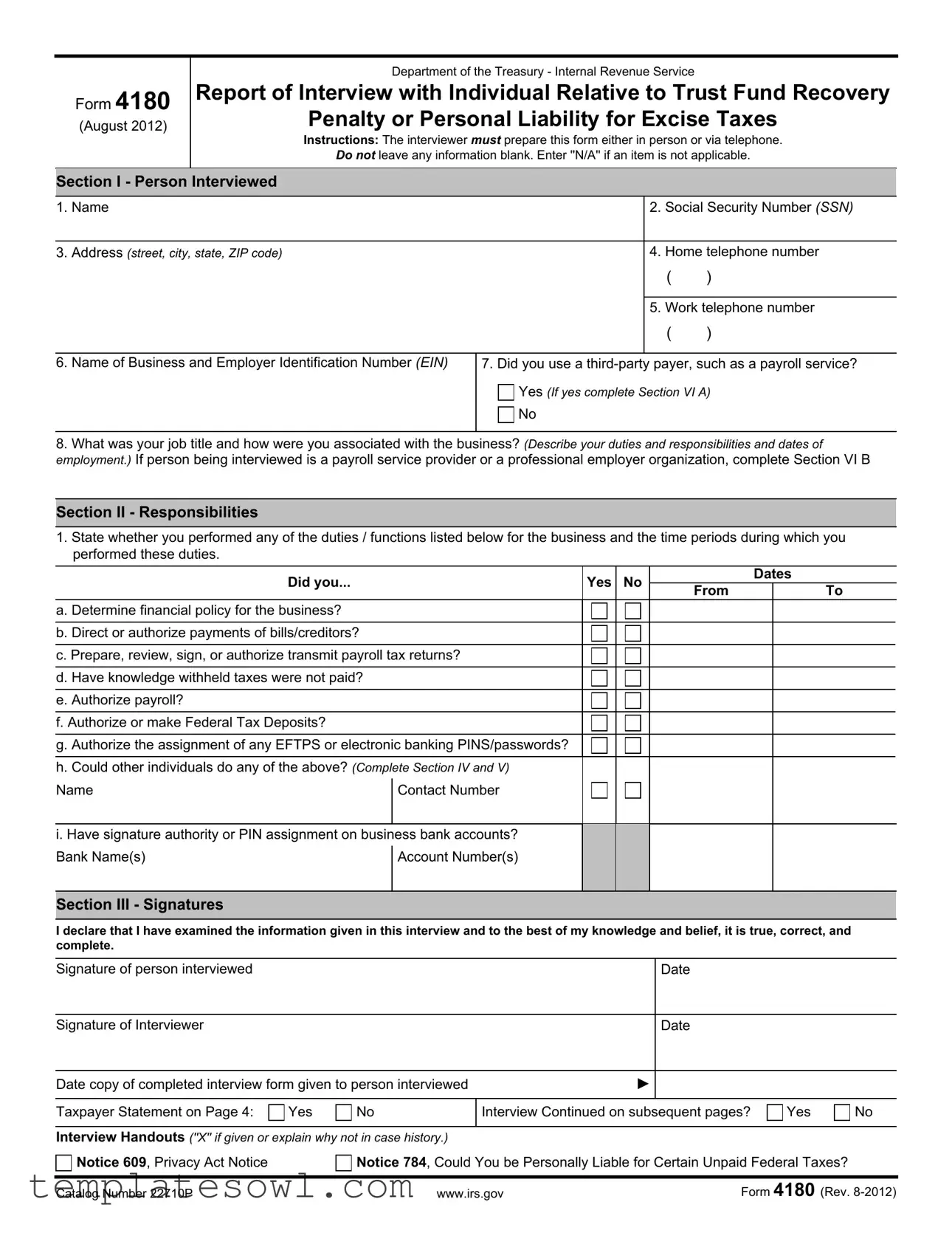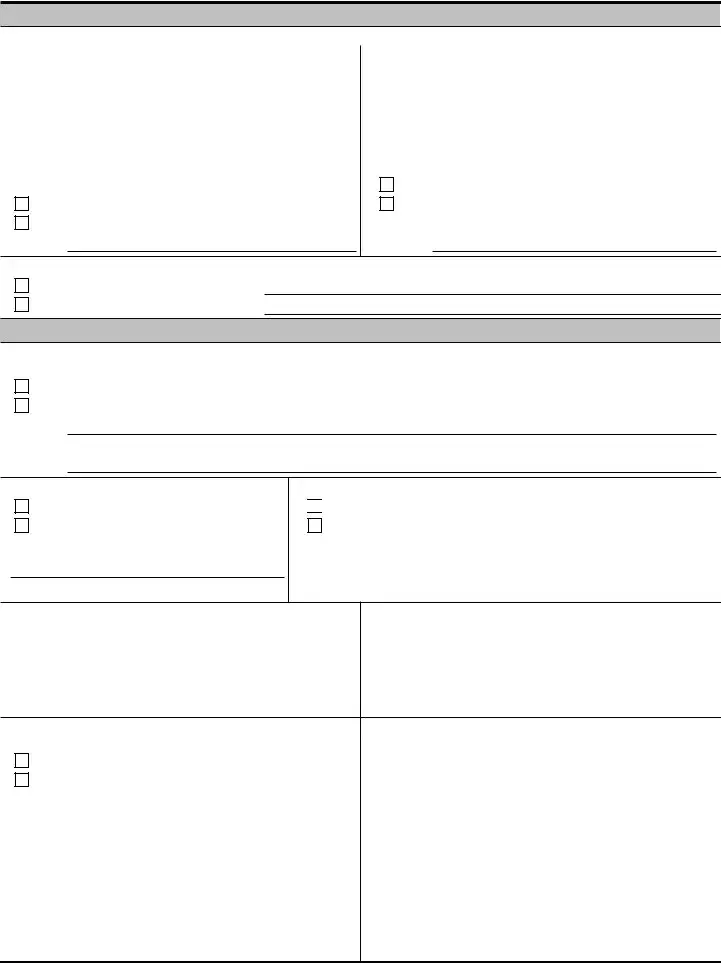What is Form 4180 used for?
Form 4180, officially titled the "Report of Interview with Individual Relative to Trust Fund Recovery Penalty or Personal Liability for Excise Taxes," is used by the Internal Revenue Service (IRS) to document interviews related to unpaid federal taxes. When there is a failure to pay certain taxes—such as payroll taxes or excise taxes—this form helps establish whether individuals were responsible for the payment of those taxes. It collects information on the individual's roles, responsibilities, and any financial information relevant to the case.
Who is required to fill out Form 4180?
This form must be filled out by an interviewer conducting an interview with an individual who may be liable for unpaid trust fund taxes or excise taxes. The individual being interviewed is typically someone who had a managerial role within a business that failed to pay taxes. Their duties and decisions about financial matters can indicate their responsibility and potential liability for the owed amount.
How should the form be completed?
Completing Form 4180 requires attention to detail. The interviewer needs to gather specific information, including the person's name, contact details, job title, and the company's financial practices. Every section of the form must be filled out; if a question does not apply, the interviewer should indicate "N/A" instead of leaving it blank. This completeness ensures that the IRS receives accurate information for their review.
What happens if an individual does not complete Form 4180?
If an individual fails to complete or provide accurate information on Form 4180, it may lead to implications regarding their liability for unpaid taxes. The IRS may interpret the incomplete information as a lack of cooperation, which could result in further investigation or even penalties. It is crucial to provide thorough and truthful responses to avoid complications.
Are there penalties associated with filing misleading information on Form 4180?
Yes, providing false information or omitting required details can lead to serious consequences. This includes potential civil penalties and, in some cases, criminal charges for fraud. The IRS heavily scrutinizes the information on this form, and inaccuracies can affect not only the individual’s tax situation but also potentially lead to legal action against them.
How does Form 4180 relate to the Trust Fund Recovery Penalty?
The Trust Fund Recovery Penalty (TFRP) is a penalty imposed on individuals responsible for collecting, accounting for, or paying over certain taxes, such as payroll taxes, who willfully fail to do so. Form 4180 is a critical tool in determining whether an individual can be held liable for the TFRP. The information collected during the interview aids the IRS in making this determination.
What resources are available for individuals completing Form 4180?
Individuals filling out Form 4180 can refer to the IRS website, which provides guidance and relevant publications about the form. Additionally, consulting with a tax professional can be beneficial. These experts can offer advice tailored to specific situations and help ensure that all information is complete and accurate.




 No
No
